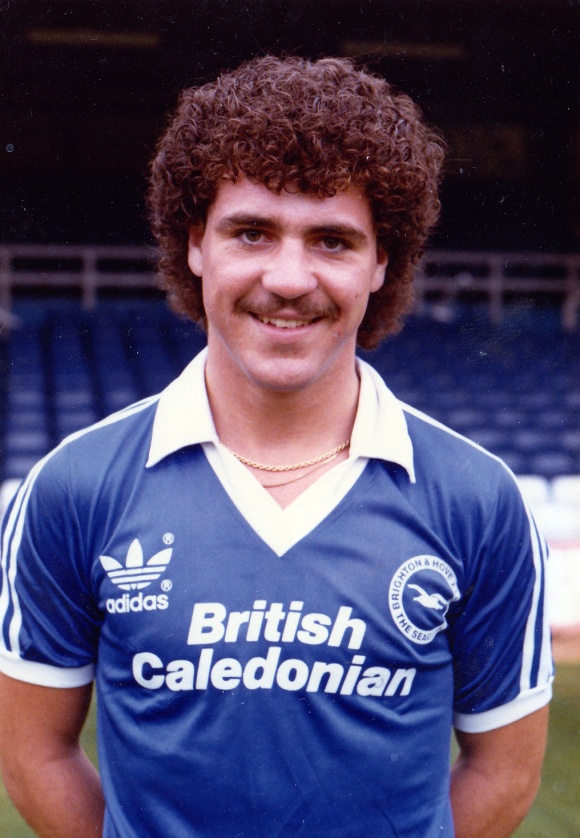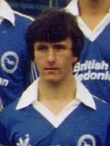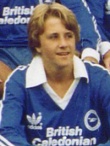In Lawrie McMenemy’s ‘Book of Soccer’ from 1981, it gave an insight into the world of the football apprentice back then:
Life as an apprentice footballer is a hard slog – have no doubt about that. The basic hours are nine to five from Monday to Friday, with a game on Saturday morning. The social life is very limited. You still want to be an apprentice? Well read on, because if you love football, then – at the risk of repeating myself – it’s a wonderful life. Whatever you earn, you are being paid for doing what you enjoy. You have free lodgings and meals. You ‘play games’ for most of the time. And, if you’re with a big club, you mix with, and learn from, the stars.
The chapter went on to state that in the Football League, clubs were permitted a maximum of fifteen apprentices at any one time. At 16, the wages of an apprentice at the time were about £16 a week, rising to £20 at 17, the maximum the Football League would permit in those days. At 18, an apprentice would find out whether he will be retained or not. According to the book, these young hopefuls had a full programme of training in the morning and afternoon, with chores fitted in before or after training. Famously, the biggest chore was cleaning boots, which apprentices nowadays no longer do. However, as the old-school voice of McMenemy argued:
The chores that apprentices do are all connected with the cultivation of pride in the club. They are not provided just for the sake of finding them something to do. All are necessary jobs and someone has to do them. An apprentice is not a groundstaff boy, as youngsters used to be, although there are jobs connected with maintenance that he might occasionally help with.
At the Goldstone Ground, Mark Fleet was one of several Brighton & Hove Albion apprentice footballers in the early 1980s. Here he was proudly wearing the club colours:

Hailing from Southport, he came to the club as an apprentice in September 1980, featuring regularly for the Albion in the youth side that won both the Hampshire Youth League and Youth Cup in 1980/81, before playing for Albion reserves in the Midweek Football League. A left-back by trade, he had a strong robust physique for one so young. He was picked for the Irish youth trials in Dublin in November 1980. At the age of 16, he eventually became an Eire Youth International when he played in the number 3 shirt in a 2-2 draw against Wales in Swansea in February 1981 as part of the European Youth Championship. Despite international recognition, he suffered with his knees, and it soon blighted his progress.
Goalkeeper Simon Steele (below left), who was to play for Brighton against Real Madrid in a pre-season friendly in 1983, joined a little later than Fleet, around 1982 and he and Fleet were originally quite close friends and they both received support with their progress from Jimmy Melia, then working as chief scout and as part of the coaching staff.



Out of an intake of about nine second-year apprentices in 1982, Mike Bailey signed Fleet and Danny Deans (central photo above) on a year’s professional contract and Matt Wiltshire (right) on a two year pro deal. Although a matchday programme from March 1983 mentioned that Fleet had been “improving steadily among the defenders”, he had to have a knee operation that summer and then suffered a recurrence of knee trouble following a very crude tackle on him in a reserve game with Arsenal in the September that followed. It was his last ever game for the club. Fleet and Deans didn’t gain a further contract, and Wiltshire left too after his two year deal expired.
The matchday programme vs Portsmouth in December 1984 announced Fleet’s retirement along with Giles Stille’s. Regarding Fleet:
During the summer he had another operation, but unfortunately the specialists have decided he can no longer play full-time football. We hope each of these lads find a successful career outside the game.
Nowadays, Mark Fleet has certainly made a name for himself outside the game. Unlike midfielder Giles Stille who now works as a coach and manager in Swedish football, it’s in the world of financial services where Fleet has proved himself. He is currently Distribution Director at Skipton Building Society, having previously held been managing director at AWD Moneyextra and Skipton Financial Services.
Having done a Google search, I found that there are quite a few interviews and quotes of his on various financial news sites. As you can imagine, it’s mostly almost unrecognisable from the lingo you usually hear from professional footballers.
I did try to contact Mark Fleet at Skipton by calling his office to see if I could grab an interview and ask about his memories of his playing days as well as charting the dramatic change and upturn in his career. Sadly, I didn’t get a reply!



















